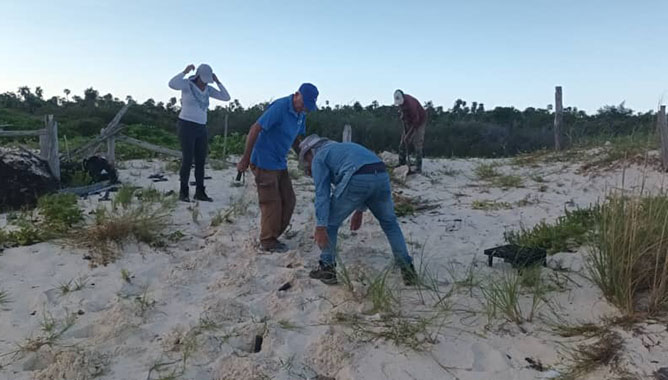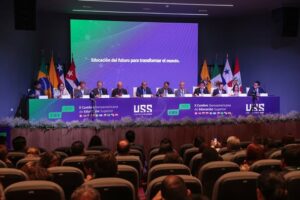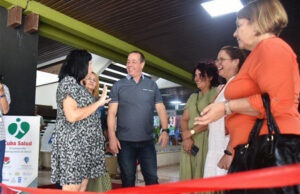The vegetation cover rehabilitation processes carried out by workers from the Centre for Environmental Engineering and Biodiversity (Ciba) of Ciego de Ávila in the dune ecosystem of Playa Pilar contribute to preserving natural values and maintaining the quality of one of the best tourist beaches in the world.
These sand mounds, declared a protected area with the category of Outstanding Natural Element, possess a maximum height of 15 metres above sea level, in addition to enhancing the landscape values of a beach ranked among the world’s best tourist destinations in the last two years and deserving of the Travellers’ Choice Best 2024 award, with the eleventh position globally and the fourth in the Caribbean, according to that ranking.
Master of Science Marisleys Castro Carrillo, head of the Department of Environmental Bioengineering at Ciba and leader of the project «Rehabilitation of dune ecosystems in Jardines del Rey to promote sustainable tourism», stated that they help preserve and strengthen the resilience of these natural structures against climate change and natural disasters.
She referred to the recent planting of over 600 seedlings of native species (beach rice, mate and seashore purslane), obtained through tube reproduction technology, using combinations of different natural substrates and biofertilisers, under atypical conditions as the nursery is located at Ciba, distant from the northern Avilanian cays.
Specialists and technicians working in that Outstanding Natural Element, managed by the Provincial Flora and Fauna Enterprise, also participated in the revegetation.
dunasThe Playa Pilar Dunes extend, in the form of a rectangular strip, over some 35 hectares, bordering the coastal zone between the Iberostar Playa Pilar and Playa Luxury hotels, two of the most luxurious in the tourist enclave.
With attractive plant formations, they constitute the habitat of six reptile species belonging to four families, including specimens of lizards whose location is restricted to that place; and 69 varieties of birds, including permanent residents and migrants.
Castro Carrillo highlighted that over 1500 plantings of native species from dune ecosystems have been sown during the current year in the coastal segments where this territorial project intervenes, including stretches of Las Coloradas and Larga beaches in Cayo Coco; and Pilar, Cayo Guillermo.
With rhizomatous roots, the aforementioned plant species ensure sand retention, serving as a reservoir for beach recovery after erosive events, which maintains stability in the coastline.
As part of the project’s work, the aforementioned scientific research centre, subordinate to the Environment Agency of the Ministry of Science, Technology and Environment, also extracted plant material to continue the propagation of native species in the nursery.
Master of Science Yamilé Jiménez Peña, director of Ciba, highlighted the contributions of that project to the conservation of sandy beaches, one of the priorities established in the Cuban State Plan to Tackle Climate Change (Task Life).




